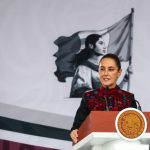Among the 21 new cardinals announced by Pope Francis is Monsignor Paskalis Bruno Syukur, bishop of Bogor. The three predecessors were linked in various ways to the Archdiocese of Semarang. Franciscan friar, authoritarian personality with a low profile and a smiling face.
Jakarta () – In the appointment of 21 new cardinals announced by Pope Francis on October 6, there is also an absolute novelty for Indonesia, the most populous Muslim nation in the world, and which has caused great “surprise” among the faithful and within the local Church: after the three cardinals originally from the province of Central Java and all linked to the diocese of Semarang, in fact, the pontiff has chosen the bishop of the diocese of Bogor (in the province of West Java) mons. . Paskalis Bruno Syukur (Ofm), Franciscan from the island of Flores, historically the heart of the Catholic presence in Indonesia.
After the appointment, mixed reactions arose among Indonesian Catholics: surprise and joy for the new cardinal of the archipelago, but also some “concern” because in Bogor there is a strong fear that he will be transferred to another position after the purple. “Personally, I am ‘shocked’ to hear the news that our bishop will become the new cardinal next December, as there had been no ‘hint’ before,” an elderly priest from Bogor told . “I hope my bishop is not transferred to another diocese that is still vacant,” adds a former seminarian from the area.
Bishop Paskalis Bruno Syukur, current bishop of Bogor, was born on May 17, 1962 in Ranggu, diocese of Ruteng, on the island of Flores. After primary school, he attended the Pius X Minor Seminary in Kisol. He completed his philosophical studies at the Driyakara Faculty of Philosophy in Jakarta, the capital, and then continued his theological studies at the Faculty of Theology in Yogyakarta. The future cardinal made his solemn profession with the Minor Brothers on January 22, 1989 and was ordained a priest on February 2, 1991.
Over time he held the following positions: 1991-1993, ministry in the parish of Moanemani, diocese of Jayapura (West Papua); 1993-1996, studies for a Bachelor’s degree in Spirituality at the Antonianum in Rome; 1996-2001, novice master in Depok; 1998-2001, guardian of the Franciscan community of Depok and member of the Provincial Council; 2001-2009, provincial minister in Indonesia; Since 2009, General Definitor of the Ofm for Asia and Oceania in Rome. On November 21, 2013, Pope Francis called him to lead the diocese of Bogor. The person writing this has known him personally since 1984, when we both attended the philosophical high school in Jakarta, and since then he was distinguished by his low profile, his smiling face and his friendly treatment of everyone he met along the way.
After his appointment as bishop, he adopted “Magnificat anima mea Dominum” (Luke 1:46) as his pastoral motto and, since last year, he has served as general secretary of the Indonesian Bishops’ Conference (Kwi). The appointment has even surprised the Indonesian ambassador to the Holy See, Trias Kuncahyono, who had “no idea” about a possible new cardinal. Interviewed by , the diplomat stressed that the pontiff’s decision to “elect Monsignor Paskalis Bruno Syukur as the country’s new cardinal reflects the true character of the Catholic Church with its ‘universality’.”
To date, Indonesia has had four cardinals, three of them from the province of Central Java and of Javanese ethnicity, with deep ties to Semarang: these are the late First Cardinal Justinus Darmojuwono, priest of the archdiocese of Semarang; Card. Julius Darmaatmadja, Jesuit and head of the order’s Indonesian province before being elected bishop of Semarang in 1993 and later transferred to Jakarta; a similar story for Card. Ignatius Suharyo Hardjoatmodjo, archbishop of Semarang, later called to head the archdiocese of Jakarta. Unlike his predecessors, as has been said, the new cardinal is originally from the island of Flores and from the local ethnic group.


![[Img #74676]](https://thelatestnews.world/wp-content/uploads/2024/12/Laser-artificial-neuron-150x150.jpg)









Add Comment